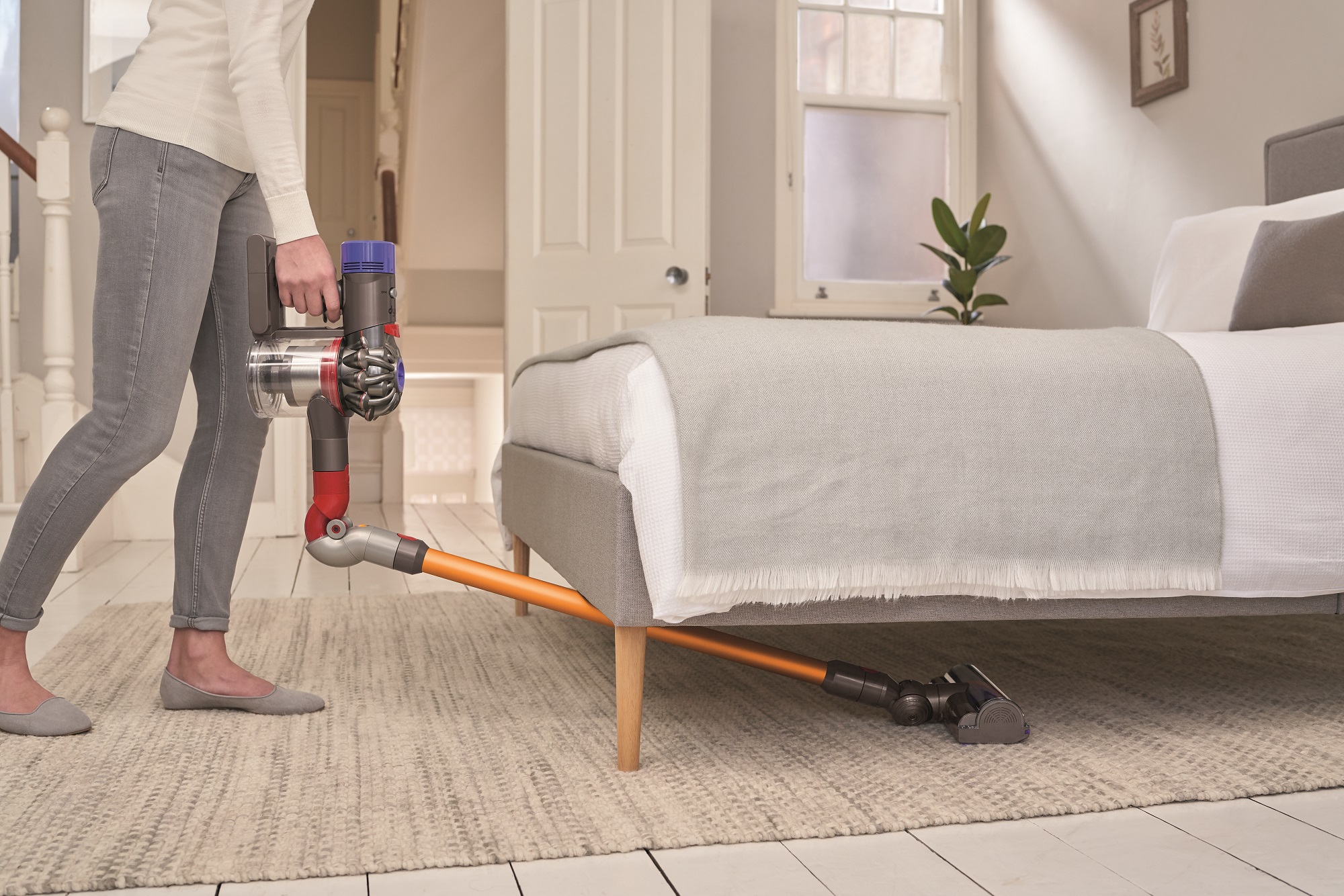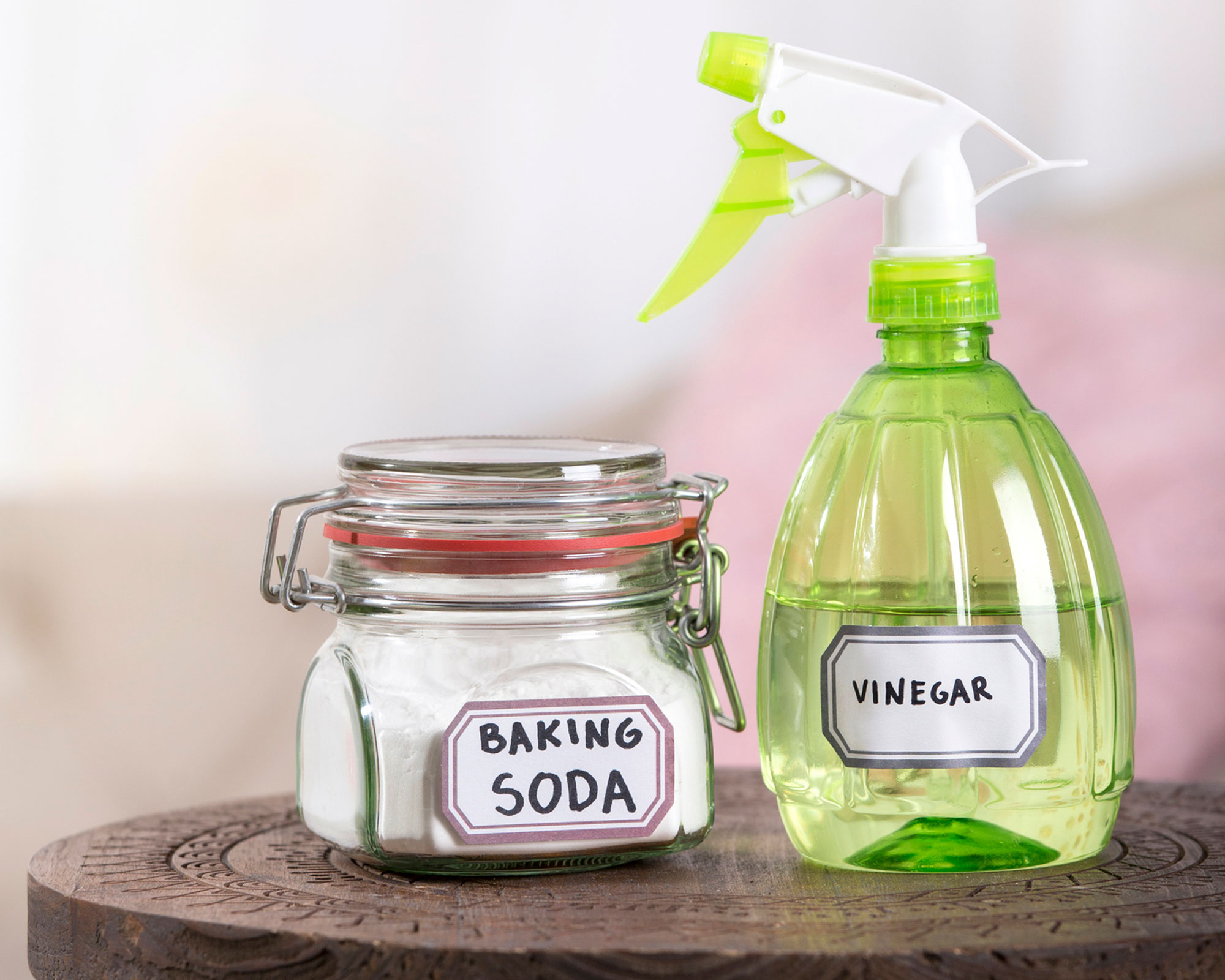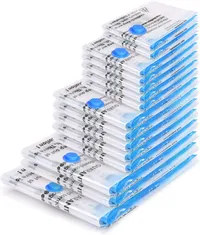How to get rid of clothes moths from your carpet and clothes using vinegar, pheromone traps and more
Desperate to know how to get rid of clothes moths? They’re a notoriously resilient pest, but you can defeat them using these techniques


Want to know how to get rid of clothes moths once and for all?
Clothes moths can do some serious damage gobbling up your favourite jumpers, silk garments, and carpets. We’ve even seen clothes moth damage in cotton t-shirts.
You can identify them by checking in dark, undisturbed places as this is where they prefer to lay their eggs. Look out for creamy white larvae with a brown head in seldom used drawers and the back of your wardrobe. You should also check areas of carpet that are hidden by rugs, or underneath furniture.
Haven't noticed this sort of damage? Read our guide to how to get rid of flying insects to figure out what winged pest you may be contending with.
Sadly, by the time you’ve discovered you have a clothes moth infestation, it’s often too late for the item of clothing. Don’t give up, though: you can get rid of clothes moths, and ensure they stay out of your wardrobe.
Alice Shaw-Beckett, Head of Content at Cleanipedia explains what clothes moths do to your threads:
'Clothes moths lay their eggs on natural fabrics like wool and fur and the larvae eat away at the material they’ve spun their webbing across, leaving holes and weak fibres in their wake. The common clothes moth can be found worldwide and is one of the most aggressive species of clothes moth for damaging textiles.'
There's no need to fret, though, because the following tricks should help repel them for good and make sure your cashmere is safe from their clutches.
- Pantry moths or clothes moths? Our how to get rid of moths and how to identify them will help answer that question.
Use pheromone traps
If you're desperate to find out how to get rid of clothes moths, we'll cut right to the chase with the most effective method we’ve found of dealing with fairly large numbers of moths.
It’s much more effective than the vinegar method we've detailed below – and who really want your cupboards to smell like vinegar anyway?
Pheromone traps have sticky strips covered in female moth pheromone, which attracts male moths. If your infestation level is relatively low, you may be able to get rid of the moths by killing off the males, but it’s very important to simultaneously kill the moth larvae that have likely remained. So, always combine this method with the below.

Wash your clothes and carpets
There’s no underestimating the importance of this step, no matter what other method for getting rid of moths you’re trying. Moths love the smell of human sweat and body oils, so always wash all your clothes before folding and storing them.
Cedar-infused wool detergents will also help repel new moths. It’s also a good idea to give all your clothes a refreshing launder even if they are clean, but you haven’t worn them for a while. Moths like being undisturbed in dark corners, so you want to disturb their peace as often as possible.
We realise that not every item can be washed in your machine so we recommend taking all your dry clean only items to the dry cleaner and if you have garments made from non-washable fabrics, try wrapping them in plastic bags and popping them in the freezer for 48 hours (sub-zero temperatures will kill moth larvae).
- You can find more savvy tips on how to do laundry in our guide.

You'll also want to make a thorough job of vacuuming your carpets, paying attention to nooks and crannies, then treat the areas where you've seen moths.
We recommend vacuuming in your wardrobe too using crevice nozzle to get into the corners and along edges.
Think you might need to bring out the big guns with a new vacuum? Take a look at the best vacuum cleaners in our buyer’s guide.
Try diatomaceous earth
Diatomaceous earth is basically a very fine rock powder that acts as a desiccant, drying out the insect’s body at every stage of life. It’s highly effective, but can be messy, and you must wear protective gloves and a mask while applying it because it can irritate the respiratory system if inhaled.
You can also get diatomaceous earth in a spray bottle, which is especially handy for spraying inside wall crevices and between wardrobe shelves. It’s also a great option for carpets, as you can cover a large area with the dust. Be sure to only use food grade, though.
Diatomaceous earth works only while it’s dry, so if you’re sprinkling it directly on clothing, be aware that you’ll have to re-apply after you’ve washed and dried your garment.

Treat your drawers with vinegar
No time to buy one of the above options? We've got you with this tip using a store cupboard essential and your vacuum.
Using vinegar, this method is extremely effective as while the vinegar cleans, it changes the pH of anything on the surface and kills any moth eggs and larvae. It's worth a go, if you can get over the whiff.
All you'll need is water, vinegar and a spray bottle, so without further ado, here's what you do.
Method
1. Vacuum the carpet, cupboard or drawer thoroughly.
2. Create a solution of equal parts vinegar and water.
3. Spray the solution over all affected areas and wipe the solution inside cabinets and drawers, drawer slides and liners, and undersides of shelves, making sure you go over the corners, edges and nooks well.

How to prevent future clothes moth infestations
You’ve done the hard work of eradicating clothes moths from your closets, drawers and/or carpet.
Now you need to keep them from re-infesting your walk-in. We recommend the following measures.
1. Opt for a natural moth repellent
There's a plethora of great natural moth repellents on the market and it can be quite overwhelming to find one that's a sure-fire winner for the clothes moths.
Cedar wood rings hung on hangers in your closet and cedar moth balls set on top of folded clothes can help deter them as they hate the smell.
Martha Stewart shares her natural repellent recommendations on her blog:
'To help keep them away, use Vetiver, a South Asian grass with the pleasant, earthy aroma of an uncut meadow, that moth's hate. Tuck a bundle into a linen sachet and put it in a drawer, or slip it over a hanger in your coat closet to welcome guests and repel pests. Other good choices: Lavender-filled sachets or red cedar.'
2. Store wool garments in vacuum sealed bags
Cardboard storage boxes aren't much of a defence when you're tackling a clothes moth with an insatiable appetite for your best woollen garments.
They'll likely chew through the boxes to find the hidden woolly treasure inside, so we recommend making sure any freshly laundered clothes you won't be wearing until next season are stored safely in vacuum-compressed bags.
If you have expensive garments you want to wear now, hang them in garment bags for a little extra protection.
3. Use essential oils to make a moth repellent spray
A combination of essential oils always works better than any one oil, so we recommend soaking cotton balls in a mixture of lavender, clove, thyme, and cedar essential oils.
Cedar hangers or lavender sachets on their own are unlikely to be effective.
Or why not make your own essential oil based moth repellent spray – using enough essential oil to create a fragrance mixed with water – and spritz on carpets and in cupboards.
4. Clean cupboards regularly
It sounds like a really arduous task but this is a crucial step in your defence against the mighty clothes moth.
Air your wardrobe regularly to prevent warm, damp or musty conditions building up, which clothes moths love, and make sure clothes are nicely spread out in your closet.
Get small space home decor ideas, celeb inspiration, DIY tips and more, straight to your inbox!
Anna is a professional writer with many years of experience. She has a passion for contemporary home decor and gardening. She covers a range of topics, from practical advice to interior and garden design.
